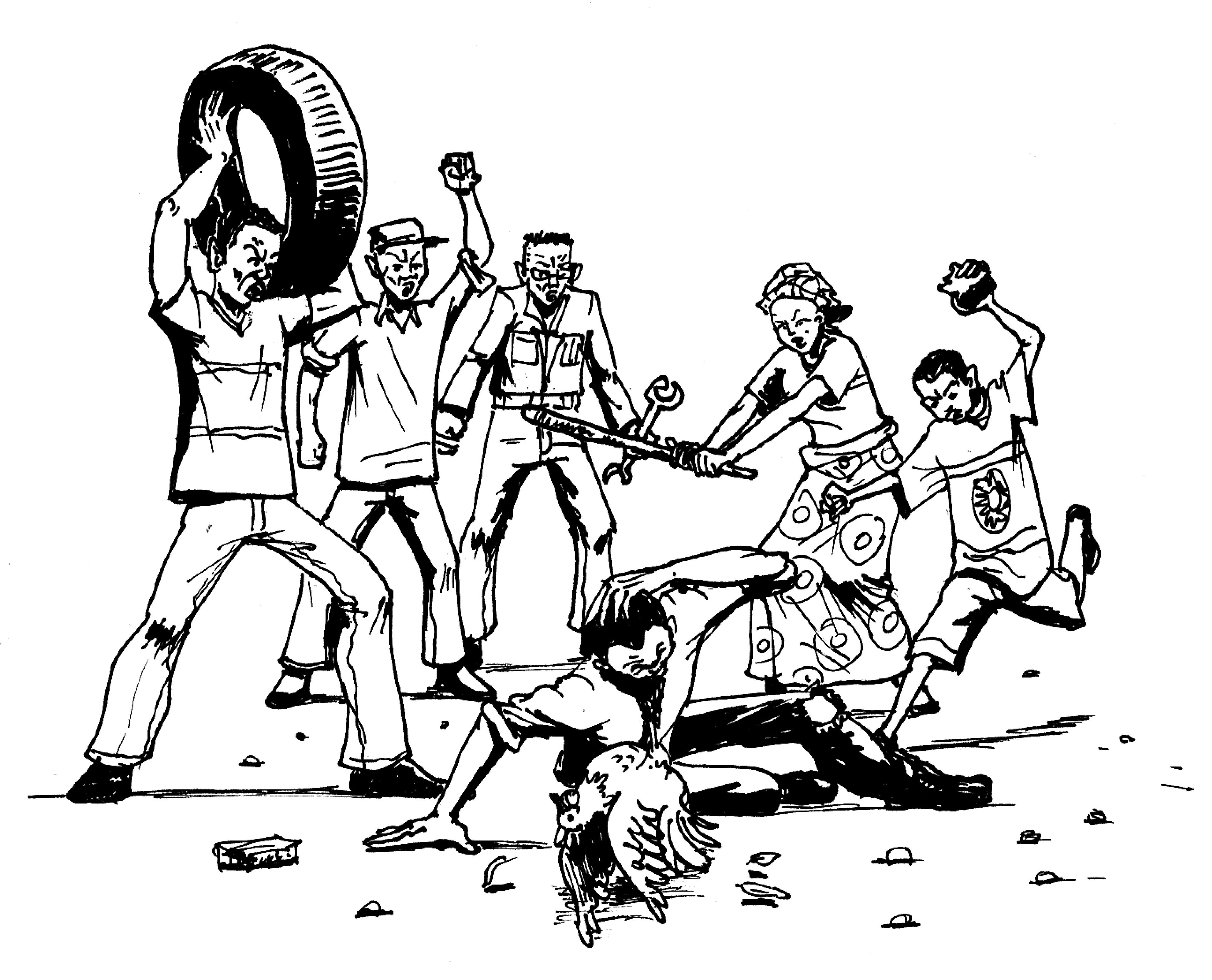
February 23, 2022
Rakshit Rautela
Rights based on a binary notion of gender, and difficulty in identifying successors.
Introduction:
Over the last decade, India has seen an increasing institutional recognition of transgender persons. This is reflected both in public policy and legal decisions. In 2011, the national census for the first time allowed persons to identify as others - leading to approximately five hundred thousand individuals availing the choice.However, transgender persons continue to face discrimination.
One reason for this is the lack of legal recognition. It was only in 2014 that the Supreme Court of India first directed the constitutional recognition of a third gender.The petitioners claimed deprivation of rights ordinarily available to citizens (such as the right to access healthcare and employment, and the right to own property). The court acknowledged the hurdles that transgender persons face in exercising inheritance rights. It attributed this to
(i) Rights based on a binary notion of gender, and
(ii) Difficulty in identifying successors.
Although the judgment reflects a progressive understanding of gender identities, India still needs to tackle several challenges.
Rights of transgender persons in India
Several scholars and judges have written about the acceptance of transgender persons in ancient India. This position changed during India’s colonial rule.The criminalisation was rooted in British norms and a complex set of local factors, including elite Indian attitudes.
However, there has been some progress regarding the rights of transgender persons. In 2011, after petitions to several government bodies, the national census for the first time allowedpersons to identify as others - leading to approximately five hundred thousand persons availing the choice. Two years later, the government constituted an Expert Committee to examine issues related to transgender persons. The report gave recommendations regarding increased access to education, healthcare, and employment. In 2014, in a watershed moment for transgender rights, the Supreme Court of India passed its judgment in NALSA v Union of India, officially recognising a third gender and directing the government to implement welfare policies. After the judgment, several State governments passed transgender policies to secure a wide array of civil rights. Lastly, the Transgender Persons (Protection of Rights) Act was passed in 2019. It aims to protect the rights of transgender persons and encourage welfare measures. Though most of these developments did not focus on property rights, it is worth showing them credence and understanding transgender rights, including any reference to inheritance and related rights.
National Legal Services Authority v Union of India (2014) 5 SCC 438
The National Legal Services Authority is a statutory body that aims to provide “free and competent legal services to the weaker sections of the society”.
After several reports regarding the discrimination faced by transgender persons, in 2012, the National Legal Services Authority of India (NALSA) filed a petition before the Supreme Court to address these concerns.The petitioners claimed deprivation of rights ordinarily available to citizens (such as the right to vote and participate in elections, access healthcare and employment, and own property).A two-judge bench of Justice Radhakrishnan and Justice (Dr) Sikri pronounced its judgment in April 2014. While dealing with whether persons had the right to be recognised as per their perceived gender, it expanded the notion of sex under the Constitution.34 Now, any prohibited discrimination based on sex under Articles 15 and 16 would include discrimination based on gender identity.Transgender persons were to be equal citizens with full protection of all fundamental rights. It held that one’s gender expression would be protected under Article 19(1)(a) of the Constitution as it reflects the innate character and identity of persons.
Lastly, the court observed that provisions in the Constitution are gender-neutraland include transgender persons within the scope of protection.They are not limited to strict interpretations of the male or female gender. These findings were reflected in the slew of remedies granted to the petitioners.The court directed the Central and State governments to comply with specific (provide healthcare centres), broad (create public awareness to ensure social inclusion) and imprecise (address problems faced by transgender persons and ensure a respectful place in social and cultural life) orders.
Though the question before the court did not require it to evaluate inheritance and property rights, it acknowledged the hurdles that transgender persons face in exercising these rights. It attributed this to two reasons: Gendered Laws: Indian law, on the whole, only recognises the paradigm of binary genders of male and female, based on a person’s sex assigned by birth, including the law relating to marriage, adoption, inheritance, succession.Non-recognition of Hijras/- Transgender’s identity in various legislations denies them equal protection of the law, and they face widespread discrimination.
Identification: Gender identification becomes an essential component for enjoying civil rights by this community. It is only [then] that many rights attached to the sexual recognition as ‘third gender’ would be available to this community more meaningfully viz. the right to vote, the right to own property, the right to marry, [and] the right to claim a formal identity.
Unsurprisingly, the judgment is not perfect and often vague in understanding gender.At instances, the court assumes that transgender persons necessarily have a genital anatomy problem. Though the court’s primary responsibility is to interpret the Constitution, which it admittedly does well, it often fails to be an instructive judicial authority. The judgment gives contradictory and imprecise directions that cannot be implemented – passing the onus for recognition to governments and leaving scope for arbitrariness.However, it is the only acknowledgement by a central authority of the poor property rights of transgender persons.
Transgender Persons (Protection of Rights) Act
After the decision in NALSA, the Transgender Persons (Protection of Rights) Bill was introduced in Parliament in 2016.However, it lapsed with the then Parliament’s dissolution, subsequently being reintroduced and passed in 2019. Given its proximity to the Supreme Court’s decision, to incorporates the following multi-identity definition: (k) transgender person means a person whose gender does not match with the gender assigned to that person at birth and includes trans-man or trans-woman (whether or not such person has undergone Sex Reassignment Surgery or hormone therapy or laser therapy or such other therapy), person with intersex variations, genderqueer and person having such sociocultural identities as kinner, hijra, aravani, and jogta.
The Act prohibits discrimination against transgender persons, including unfair treatment or denial of service concerning:
(a) education;
(b) employment;
(c) right to reside, purchase, rent, or Magistrate’s jurisdiction, a task which may be difficult for transgender persons who may not possess identification documents and often do not have a permanent residence.
The law exacerbates discretion regarding determining a person’s gender and goes against the right of self-determination recognised in NALSA v Union of India.
Challenges in the law
As the Supreme Court observed, the current regime restricts the ability of transgender persons to acquire property. In India, most property is acquired through inheritance. For example, Lahoti, Suchitra, Swaminathan, and others (2016) note that almost 85% of land in rural areas is acquired through inheritance.
We thus focus on challenges faced by transgender persons in inheriting property.
These arise primarily for two reasons:
(i) inheritance laws define rights based on a binary notion of gender, and
(ii) difficulty in identifying successors.
To better understand the consequences of these challenges, we use hypothetical situations inspired by the case of Ajay Mafatlal. However, we make modifications in the situation depending on the challenge faced in inheritance. This is because there is no uniform route of discrimination against transgender persons. For example, while some instances may require the determination of the gender of the deceased person, others may require understanding what relations could the person enter into. Notably, these situations do not capture all transgender experiences. Other instances may include distinctive Indian and South Asian realities of marginalised communities, including but not limited to the well-known hijra community. They are only meant as an example to demonstrate the consequences of the challenges in the Indian inheritance scheme.
Hindu Succession Act
The Hindu Succession Act governs the rights of Hindus, Sikhs, Buddhists, and Jains.It provides detailed rules regarding succession.However, the Act does not envisage transgender persons within its scheme. This is evident through the definition clause, which prescribesThe Act grants inheritance rights to sons and daughters. It does not envisage transgender persons or a change in gender identity. Moreover, there are specific sections for rules of inheritance for males and females, which governs devolution of male intestates’ property, dictates the priority of inheritance through classes of heirs.
Class I heirs include, broadly, the male intestate’s mother and lineal descendants.
Class II heirs are the father, siblings, lineal descendants of siblings, and the siblings of the male intestate’s parents.
On the other hand, sec. 15 (1) provides the rules of inheritance for property belonging to female intestates. It does not organise the heirs by classes. Instead, it explicitly lists the persons who are eligible to inherit the property. The property first devolves to the deceased’s children, followed by her husband’s heirs. There is a marked difference in how males and females are treated under the Act. However, there is no clarity on who is included within either of these terms. For example, the Act is silent whether a transgender person who identifies as a male would be entitled to inheritance under sec. 8. The answer to this question is also not available in the General Clauses Act, which provides definitions missing from specific legislation.
Adoption In India:
Adoption is governed by personal (Hindu Adoptions and Maintenance Act) and general law (Juvenile Justice (Care and Protection of Children) Act). Adoption has a direct relation to inheritance rights. This is because it would affect the family structure, including the order of inheritance. For example, if a person without children is unable to adopt, their property may proceed to their siblings. This would not be the case if they could adopt a child. This is of increased significance for transgender persons that may follow a guru-chela relation analogous to adoption. Adoption laws differ in the treatment of male and female persons. The Hindu Adoptions and Maintenance Act provides that a single male person can only adopt a female if he is at least twenty-one years older than the person to be adopted.Similarly, there needs to be a twenty-one-year gap between a single adoptive mother and a male child. Moreover, the Adoption Regulations passed under the Juvenile Justice Act do not allow a single male to adopt a female child. There is no such restriction on a female adopting a male child.
Both Acts (and regulations) also have repeated usage of gendered sections. There are 36 and 37 instances of the term’s male and female in the Adoption Regulations, respectively. This creates uncertainty for transgender parents
Civil rights
It must be available to all regardless of a change in gender identities. In particular, the law requires at least the following three measures:
1. Amend inheritance laws to include gender-neutral provisions;
2. Amend rules to ensure that all identification documents include transgender persons; and
3. Include inheritance as a prohibited field of discrimination under the Transgender Persons (Protection of Rights) Act.
In the same spirit, materialising inheritance rights requires guaranteeing freedoms (such as marriage and adoption) ordinarily available to citizens. Implementing these recommendations may not be easy. First, though this paper attempts to identify inheritance related central laws that include gendered terms, this search is not exhaustive. Without an exhaustive search, uniform changes are not ideal since they require context-specific research. For example, the Muslim Personal Law (Shariat) Application Act was enacted to protect the property of women. Thus, it is expected that the legislature would not want to make the Act gender-neutral. This situation may be replicated in other legislation not yet identified.
However, like other countries, the law should add definition clauses for transmen and women and provide the treatment for transgender persons who do not identify as either men or women. Second, some legislation would only require changes in their definitions, while others would require changes across sections. The Hindu Succession Act is an example of both these categories. Though the definition of an heir, etc should be amended to include transgender persons, this may not be enough. Sec.8 of the Act should be amended to apply to all persons, irrespective of their gender. This would simplify legislation with less scope for confusion. Thus, the recommendations should be implemented to achieve gender-neutrality through minimally disruptive amendments.
Conclusion
Transgender rights are a vast and complex subject. Even within the domain of inheritance rights, this cannot be a comprehensive work of all challenges faced by transgender persons. However, it supports the finding that Indian laws are based on binary genders. Successors are often difficult to identify as transgender persons may lack documentation, could not marry, or cannot prove adoption. This approach is flawed as it significantly alienates inheritance rights. Contemporary knowledge, both international and domestic, has grown to recognise the rights of all persons, notwithstanding their gender. There is a need to amend Indian legislation to adapt to such knowledge.





